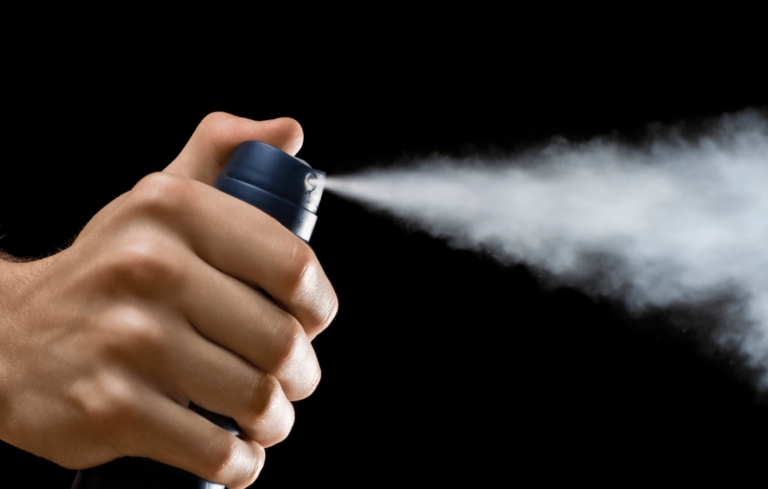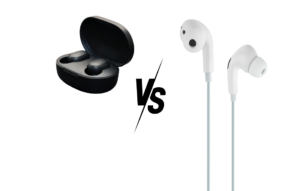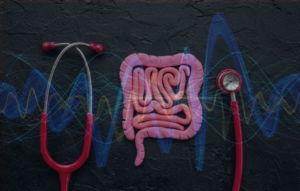You foam roll religiously. You stretch. You eat clean. You supplement collagen, train smart, and maybe even ice bath harder than you should. So why does that nagging Achilles keep flaring up? Why does your shoulder feel like it’s made of drywall paste despite all the rehab? You’re not crazy. You’re just toxic—literally.
The idea that tendon health is only about biomechanics, training load, and nutrition is outdated. The elephant in the weight room? Environmental toxins.
Even the best recovery protocols can’t offset what your body has to deal with at a cellular level. And when that toxic burden is silently stacking up, the result is often chronic inflammation, tissue breakdown, and an inability to repair under stress. That’s the slow, invisible spiral toward injury most athletes never see coming.
Tendons: Collagen, Blood Flow, and the Long Game
Tendons are mostly type I collagen—strong, fibrous, and slow to heal. They’re avascular by nature, which means minimal blood flow. Once damaged, they don’t bounce back easily. Any compromise in collagen production, degradation, or repair means you’re skating on thin ice.
Every jump, sprint, takedown, or landing is stacking microscopic damage on those tendons. Your body should be able to keep up with the repairs. But throw in a toxic load, and the repair crew is basically working with bent tools and broken scaffolding.
Tendon Metabolism Relies on Nutrient Absorption
Your ability to absorb minerals like zinc, copper, magnesium, and vitamin C (all crucial to collagen cross-linking) becomes impaired when your gut and liver are bogged down with toxins. It’s not just what you eat—it’s what your body can utilize.
Pesticides: Systemic Inflammation and Collagen Breakdown
Glyphosate, the active ingredient in Roundup, isn’t just sprayed on crops. It’s soaked into them. It mimics glycine, an amino acid critical for collagen structure. This molecular impersonation can disrupt normal collagen synthesis and weaken connective tissue.
Even worse, glyphosate contributes to systemic inflammation. It damages gut lining, disrupts the microbiome, and allows endotoxins to leak into circulation. Chronic inflammation is one of the fastest routes to tendon degradation.
And it’s not just glyphosate:
Atrazine: Linked to hormonal imbalances that impair repair and recovery.
2,4-D: Common lawn pesticide that can interfere with cellular metabolism.
How Does This Show Up in Real Athletes?
Lingering tendinitis even with rest
Recurrent microtears despite collagen supplementation
Slower post-surgery recovery or tissue remodeling
Pesticides are often the unseen disruptor, especially for athletes who live near treated fields, parks, or golf courses. It doesn’t matter how clean your post-game smoothie is if your lungs and skin are constantly exposed.
Plasticizers: BPA, Phthalates, and Hormone Havoc
Tendons heal through an intricate dance of growth factors, hormones, and collagen cross-linking. But if your endocrine system is off, that dance gets sloppy.
Phthalates and BPA, commonly found in plastics, are known endocrine disruptors. They bind to hormone receptors, block normal signaling, and wreak havoc on repair pathways. Testosterone, estrogen, and thyroid hormones—all key for tissue regeneration—get thrown out of balance.
Real Life Disruptors:
Pre-packaged convenience meals and snacks
Shaker bottles left in a hot car
Disposable plastic water bottles from training camps or competitions
- Leftover or takeout boxes from restaurants or meal preppers
Over time, hormonal disarray leads to:
Increased fat mass (which further stores toxins)
Slower muscle recovery
Impaired tendon and ligament strength
Even small, consistent exposure matters. That plastic wrap on your protein bar? It may not seem like a big deal—until your connective tissue starts failing under stress.
EMFs: The Invisible Stressor Disrupting Recovery
You can’t see them, smell them, or taste them—but electromagnetic fields (EMFs) are a growing part of the toxic burden facing modern athletes. While EMFs don’t directly tear collagen fibers, they do something more insidious: they disrupt cellular signaling, increase oxidative stress, and impair mitochondrial function—the trifecta of poor tissue recovery.
Studies have shown that chronic EMF exposure can increase intracellular calcium, disrupt melatonin production, and accelerate free radical damage. All of this compromises your ability to heal, regenerate tissue, and sleep deeply—three pillars of tendon health.
EMF Exposure Hotspots:
Sleeping with your phone near your head
Training with AirPods or Bluetooth earbuds
Living near 5G towers or smart meters
How This Impacts Tendons:
Poor sleep quality = slower collagen repair
Increased oxidative stress = tissue breakdown
Impaired mitochondria = reduced ATP for healing
You don’t need to ditch all devices, but mitigating EMF exposure, especially at night, is one of the most overlooked strategies for better recovery.
PFAS: The “Forever Chemicals” Weakening Your Framework
PFAS (per- and polyfluoroalkyl substances) are dubbed “forever chemicals” for a reason—they don’t break down in the environment or the human body. Over time, they accumulate in blood, organs, and yes, connective tissues. For athletes, this spells serious trouble.
PFAS have been linked to chronic inflammation, hormone disruption, and immune system dysregulation—all major roadblocks to tendon recovery and joint integrity. While research on PFAS and tendon-specific damage is still emerging, what’s clear is that their impact on collagen synthesis and endocrine balance sets the stage for chronic breakdown.
Common PFAS Exposure Sources:
Nonstick cookware (Teflon)
Water-resistant athletic clothing
Fast food wrappers and microwave popcorn bags
Contaminated municipal water supplies
How PFAS Sabotage Athletes:
Thyroid hormone suppression = poor tissue metabolism
Increased systemic inflammation = impaired recovery
Disrupted collagen matrix = weaker connective tissue
Athletes exposed to PFAS may find that their joints feel achier, their tendons stay inflamed longer, and their bodies bounce back slower—even when everything else is dialed in.
Heavy Metals: The Mitochondria Killers
Lead, cadmium, arsenic, and mercury are the usual suspects—and they don’t just mess with your brain. They impair mitochondrial function, which means your cells can’t produce enough ATP to repair soft tissue.
Even low levels of lead exposure have been linked to increased oxidative stress, poor calcium metabolism (key for tendon attachment), and lower collagen density in connective tissues.
Cadmium, often found in industrial air pollution and cigarette smoke (including secondhand), has been shown to directly inhibit collagen synthesis and increase risk of tendon tears.
Common Athlete Exposure Points:
Old gym water fountains and pipes
Urban or industrial training areas
Contaminated protein powders or untested supplements
Fish high in mercury (like tuna or swordfish)
Toxin Load and Performance Plateaus
The concept of “overtraining” may sometimes be a misdiagnosis for “under-detoxing.” If your liver, kidneys, and lymphatic system are overloaded, your tissue recovery stalls—not because of poor programming, but because of internal bottlenecks.
Athletes who are doing everything right on paper might still hit a wall if their detox pathways are clogged:
Chronic fatigue
Unexplained weight gain
Mood swings or poor sleep
Nagging pain that won’t resolve
This is why personalized testing, like hair mineral analysis or heavy metal panels, can be game changers for elite recovery plans.
What Can You Do?
You don’t need to live in a bubble to protect your tendons—just be more strategic. These action steps help reduce your toxic load and give your connective tissue the clean foundation it needs to heal, adapt, and thrive.?
1. Filter Everything
Water: Use reverse osmosis.water purification systems to filter out heavy metals, fluoride, and pesticides.
Air: Invest in an air purifier with HEPA + carbon filters.
2. Minimize EMF Exposure
Turn off Wi-Fi at night
Use airplane mode on your phone when sleeping or training
Avoid wireless earbuds—use wired when possible
Invest in Aires EMF protection to shield wireless radiation exposure from devices (save 25% on all Aires products with code “MOL”)
3. Eat Real, Organic, and Clean
Prioritize organic produce (especially from the Dirty Dozen list).
Ditch processed protein bars and synthetic supplements.
- Swap your seed oil-cooked meals and snacks for rich, animal-sourced saturated fats.
4. Ditch the Plastics
Use stainless steel or glass water bottles.
Store food in glass or beeswax wrap.
Avoid heating food in plastic containers.
5. Support Detox Pathways
Sweat: Traditional sauna, intense workouts, hot baths.
Binders: Activated charcoal, chlorella, bentonite clay.
Liver support: Milk thistle, dandelion root, castor oil packs.
Methylation support: B-complex vitamins, leafy greens, beets.
6. Protect Your Cellular Energy
Prioritize sleep, sunlight, and grounding.
Consider mitochondrial support like CoQ10, magnesium, and creatine.
Experiment with red light therapy or NAD+ precursors (under supervision).
Next-Level Tips for Athletes and Coaches
For athletes and coaches ready to push the envelope on recovery and resilience, here’s where things go from good to elite. These tips dig deeper into testing, tracking, and building detox into your overall performance plan.
Regular Lab Testing
Check for heavy metal toxicity (blood, urine, or hair testing).
Run hormonal panels to assess recovery hormones like testosterone, DHEA, and thyroid markers.
Use organic acids tests to evaluate detox efficiency and mitochondrial status.
Integrative Recovery Protocols
Schedule deload weeks that emphasize detox over training volume.
Integrate grounding and nature exposure post-training to reduce inflammation.
Use myofascial work with natural oils (avoid synthetic topical creams).
The Takeaway
If you’re an athlete battling chronic tendon pain, maybe it’s not your training. Maybe it’s your toxic burden.
Modern performance isn’t just about reps, macros, and sleep. It’s about cellular integrity. Hormonal harmony. Collagen that doesn’t fall apart when you sprint out of the gate.
Clean your environment like you clean your diet—and you might finally give your tendons a fighting chance to catch up.




















